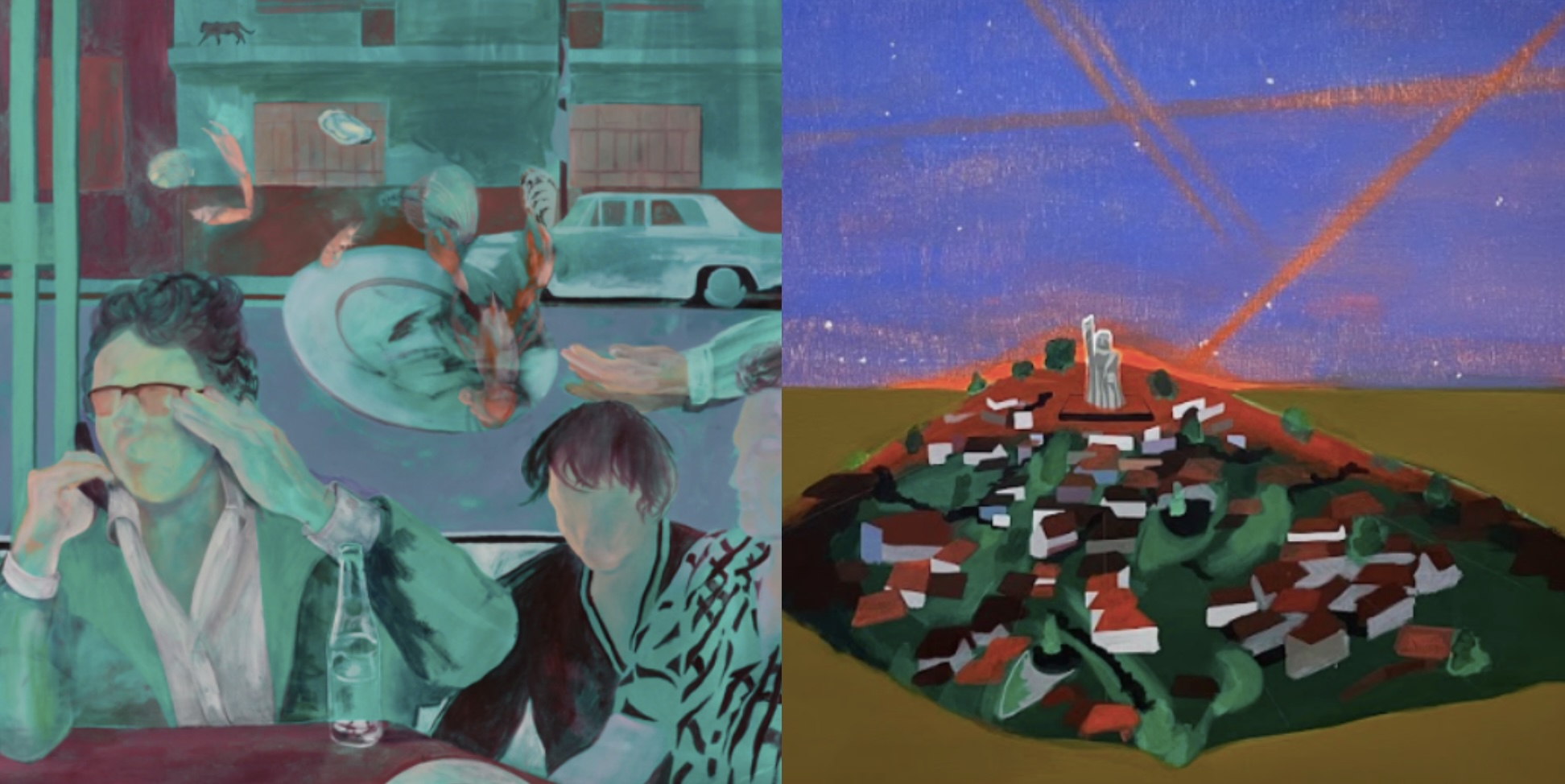
Andrea Villalón & Kitty Rice
Fractured Solitudes
Exhibition
-> Dec 12 2024 – Jan 23 2025
JO-HS presents Fractured solitudes, a show with works by Andrea Villalón and Kitty Rice.
Inspired by the iconic book The Labyrinth of Solitude by Mexican philosopher and poet Octavio Paz; Kitty Rice and Andrea Villalón introduce their hybrid exhibition titled Fractured Solitudes. Their homage to Paz begins with the divergence of their own lives. Villalón—born in Michoacán—experiences Paz’s nostalgia from England. She reconnects with her Mexican identity through memories of her past: growing up in Uruapan and later studying in Mexico City. Villalón’s imagined visions of cempasúchil flowers, canoes, and the colorful, mystical island of Janitzio—an autumnal epicenter marking the passage of the departed to the underworld and a symbol of pre-Hispanic syncretism with Christianity—embody the nostalgia that Paz so profoundly evokes: a world entangled in the search for what was and the confusion with what is. According to Paz, history and our collective yearning for a mythical dream define what it means to be Mexican. More so, history is what we are. Paz reflected that the fiestas, for the solitary Mexican, serve as an outward expression, a suspension of morality where rules dissolve, hierarchies fade, and proximity to death becomes playful. People cry, shout, laugh, play, and even kill.
In the festival, as Paz observed, the Mexican transcends and encounters otherness. As a Mexican woman, Villalón identifies with the femininity Paz describes in his nostalgic depiction of Janitzio: “Woman embodies the will of life, which is by essence impersonal, and in this fact lies her inability to have a personal life.” For Villalón, this affirmation reflects how her life abroad, full and vibrant, confronts her with an alterity. Although at times she experiences loneliness, that same alterity frees her from absolute solitude and deepens her yearning for a return to her roots in Mexico. Villalón navigates a labyrinth at the periphery, while Paz, even in the 21st century, continues to shelter us with his timeless insights.
Kitty Rice, by contrast, approaches The Labyrinth of Solitude from a different perspective. From her position of transcendent otherness, she connects with the Mexican experience in her own way. Rice navigates her solitude through a globalist, Londoner lens, inhabiting the ambiguity of desiring to identify as English while dissociating from much of her country’s identity in a sprawling, multicultural metropolis. After a long process of observational drawing and attention to architectural spaces, Rice delves into a key concept in Paz’s philosophy: Don Nadie (Mr. Nobody). Paz describes the Mexican as being caught in ambiguity, balancing between being and not being. As he points out, in Mexican custom, when someone startled at home asks, “Who’s there?” it is customary to reply, “It’s nobody, it’s me.” This reflects ninguneo—the act of reducing oneself or others to nothingness. Don Nadie, the one who reduces, lives among us: in cantinas, banks, ruins, and the heart of Mexico City.
Kitty Rice captures this concept in her artwork by creating scenes where characters blend into their surroundings like camouflage. She both understands and misunderstands Don Nadie, but she is fortunate to glimpse him– just as each of us sees ourselves between nothingness and otherness, shaped by context. Integrating her pictorial style with the vibrancy of Mexican colors, Rice produces paintings that straddle the spiritual and the mundane. Perhaps, in the end, she portrays herself, calling herself Ms. Nobody.
Dreamlike, Kitty and Andrea oscillate between the chaos and order of the constant Mexican condition, present in both the cantina and the heart of Pátzcuaro. The festival acts as the bridge between the two painters: one approaching the nostalgia of deep Mexico, and the other discovering transcendence in a condition that disarms and connects her to what she describes as Mexico’s Dionysian essence. Kitty perceives Mexico through a dialogue with art history’s representations, celebrating animality while dismantling the rigid order imposed on the periphery of the labyrinth, ultimately freeing us from control.
–JO-HS